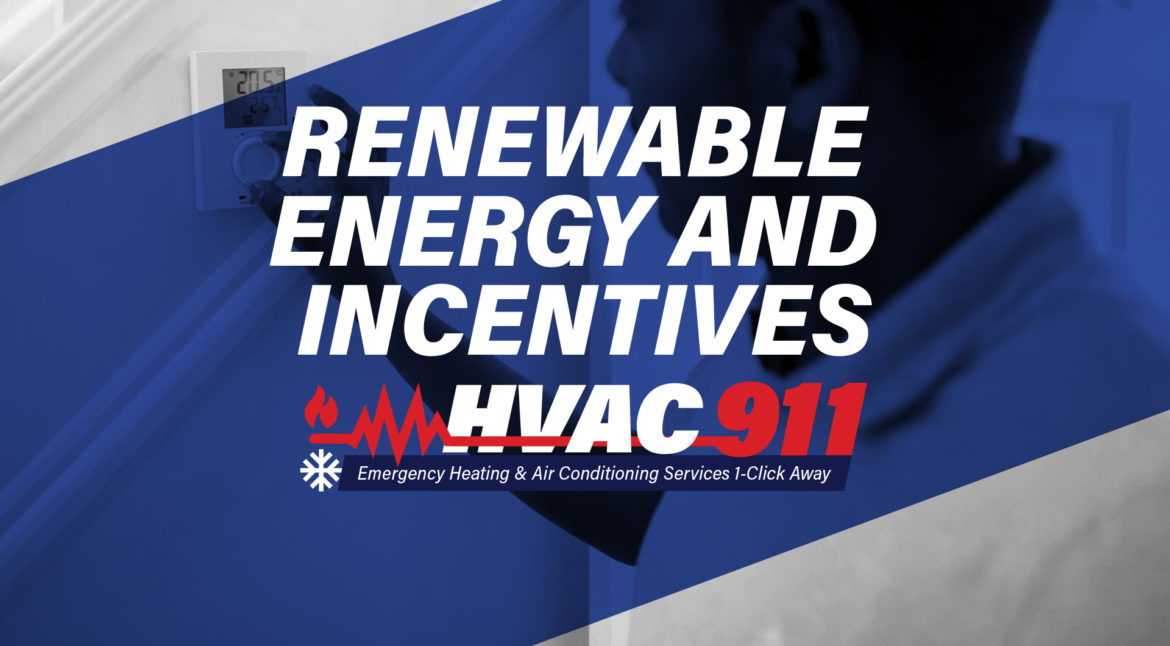Installing a geothermal heat pump could cut your energy bill by as much as 70 percent. It uses heat deep within the ground to more efficiently heat and cool your home.
It’s important to note that geothermal heat pumps have a higher upfront cost than traditional HVAC systems, but most will pay for themselves in time through energy savings.
The good news is the Federal Renewable Energy Tax Credit can substantially reduce your geothermal heat pump installation costs. Plus, you may be able to save more money by seeking out other regional and local energy incentives.
Here is what you need to know regarding the Federal Renewable Energy Tax Credit and how you can reduce your heating and cooling costs with geothermal energy.
What is the Federal Renewable Energy Tax Credit?
The credit initially began as part of the Energy Policy Act of 2005 that was passed as an incentive for renewable energies such as wind, solar and geothermal. It provided tax incentives for new and existing installations. The initial tax credit was only supposed to last through 2007, but was so popular it went through many extensions. It expired in 2016, but was reinstated in 2018 and retroactively applied to any installations installed in 2017.
After being renewed again and extended by Congress, the tax credit currently pays back 26 percent of an installation’s cost throughout 2021 and 2022. The incentive decreases to 22 percent in 2023 before going away altogether — barring another extension by Congress.
The clock is ticking. Your system needs to be up and running by 2022 to take full advantage of the 26 percent renewable energy tax credit. When you are ready, HVAC 911 cann connect you with a reputable and bonded HVAC specialist.
To claim the tax credit, complete and submit Form 5695 on your taxes. Instructions to fill out the form can be found here.
A tax cut incentive on taxes you owe
The renewable energy tax credit is non-refundable. If you do not owe at least 26 percent of the cost of your geothermal installation on your federal taxes, you do not get the difference paid back as a refund. So if your tax credit is $1,000 but you only owe $500, you can only use $500 of the credit and forfeit the other half.
Energy Star certified
To qualify for the tax credit, your geothermal heat pump has to meet Energy Star requirements. This is a federal energy-efficiency program that mandates specific standards in green energy. Not every geothermal heat pump on the market qualifies. In fact, Energy Star certified heat pumps are more than 45 percent more energy efficient than standard options. That is why it is important to work with a trusted HVAC installer that understands these requirements and can install a geothermal heat pump of supreme efficiency.
The good news is having a geothermal heat pump that meets Energy Star standards will deliver better savings on your heating and cooling bill.
Additional state and local incentives to save on a geothermal heat pump
The federal tax credit is just one program available to help you save money on geothermal heat pump installation. There may also be state, local and utility incentives to help you save further. It depends on where you live. The Database of State Incentives for Renewables & Efficiency (DSIRE) website is a great resource for additional state, regional and local savings.
Hire a HVAC 911 Technician to Install a Geothermal Heat Pump Today
These renewable energy incentives will not last forever. To take full advantage of the installation savings, contact HVAC 911 to be immediately connected with a HVAC contractor today. We are a network of highly skilled, fully vetted service technicians you can trust to install your geothermal heat pump. Our technicians have years of experience who can help you take full advantage of tax credit savings.
Contact us today to schedule a geothermal heat pump installation!
